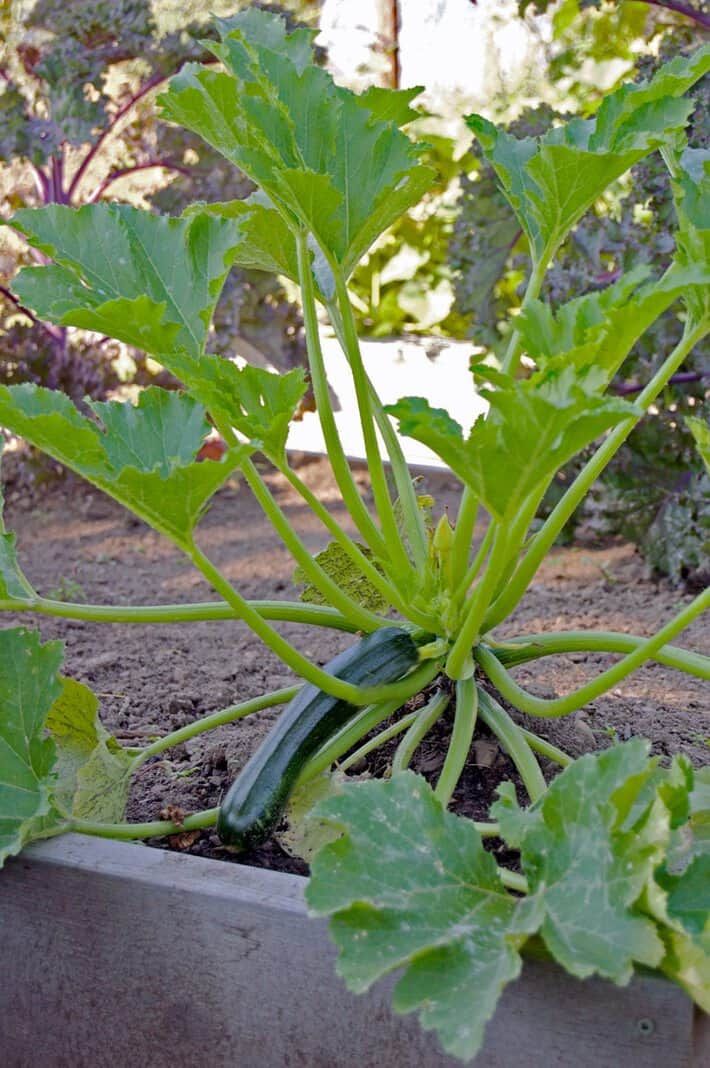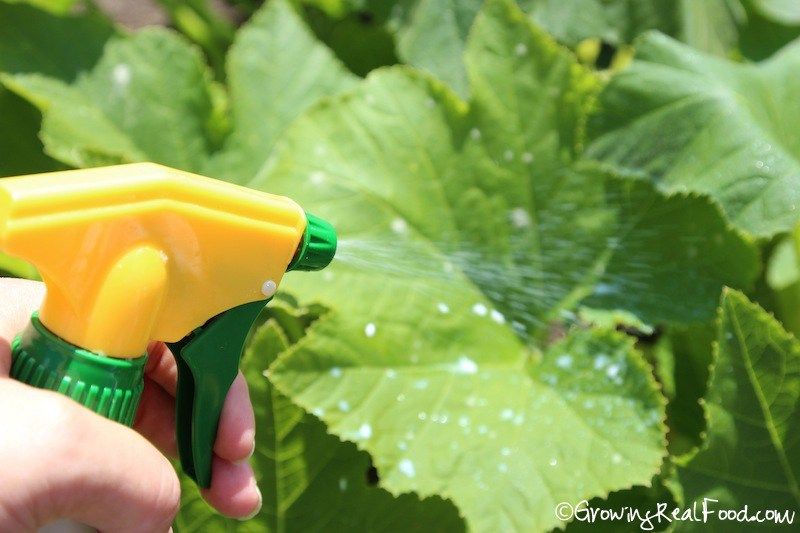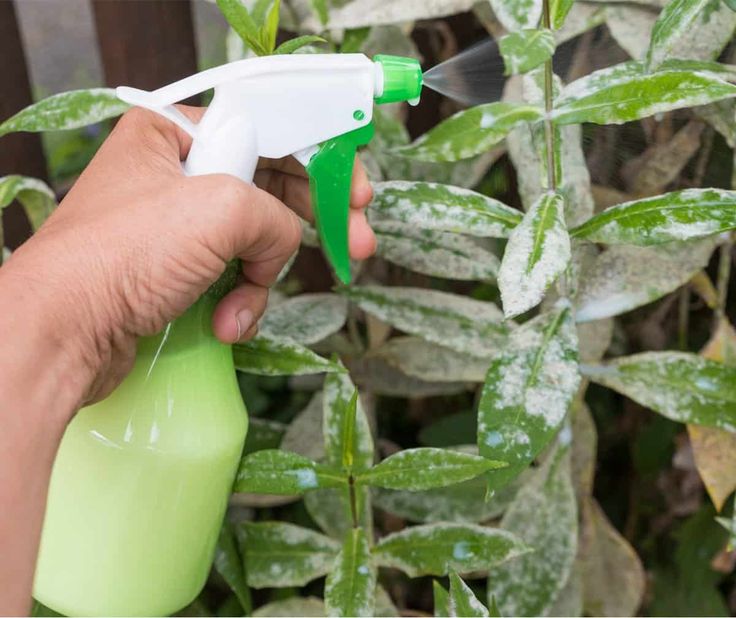A Second Application On A Cucumber Plant
It also works on cucumbers. Lets take a look at this picture below. In this picture is a climbing cucumber plant. You can clearly see the mold starting to form.
I sprayed one application and this is how it looked several days later. Here I am repeating it 10 days later. Not sure it really needed it, but I was being extra cautious.
The plant continued to thrive and look at this amazing cucumberyep a healthy plant indeed.
Sprays For Treating Powdery Mildew
A commercially available potassium bicarbonate spray is effective at preventing and containing infections, but it can quickly become expensive. A similar, more economical treatment can be improvised using ingredients most gardeners have on hand.
Mix a tablespoon of ordinary baking soda into four litres of water, and stir in a tablespoon of liquid soap. Adding a tablespoon of vegetable oil is optional, but helps the mixture stick to the leaves. Spray the entire affected plant liberally, along with its neighbours.
There are two other homemade sprays which some gardeners swear by. The first is a 50/50 mixture of milk and water, sprayed directly onto the worst-affected leaves. The idea behind this is that the milk contains amino acids, which decay into antiseptic and antifungal chemicals as the mixture evaporates. These dry out the spores, killing them, and leaving them to blow harmlessly away.
The final spraying method is a little more controversial. A mixture of one part ethanol-based mouthwash to three parts water is said to stop the fungus in its tracks. However, this should perhaps be used only as a last-gasp solution, as the astringent ethanol makes a risky addition to already-weakened plants.
Whichever of these sprays you chose, treat your plants early on a sunny day. This gives the liquid time to do its work and then evaporate before night falls. The last thing you want to do is give your mildew guest an overnight stay in cool, damp, dark conditions.
Categories
How To Treat Powdery Mildew Using Homemade And Organic Remedies
If you live in a temperate zone, chances are that you have encountered powdery mildew in your garden.
Powdery mildew is a worldwide menace, with hundreds of species of fungi that may cause it, and the ability to infect more than 10,000 species of plants.
According to Master Gardener Jim Cooper of the Washington State University Extension, it has been estimated that, when you factor in the total loss of crop yields and plant growth, powdery mildew produces the greatest losses of any single plant disease throughout farmers fields as well as home gardens.
We link to vendors to help you find relevant products. If you buy from one of our links, we may earn a commission.
Infected leaves appear as white or gray spots in the early stages of an infection. They may quickly enlarge to completely cover the infected plant parts with a nasty blight.
While these fungi do not usually kill their hosts, they do debilitate them.
However, there is hope!
In addition to weather patterns and symptoms to watch for, if you are looking for a home remedy or organic treatment, read on.
There are many options that I will cover in this guide, as follows:
Don’t Miss: Does Urine Cure Toenail Fungus
Natural Antifungal Remedies For Fungus Control
Plant diseases come in many varieties, with fungal infections being the most common. Their onset is usually slow. This is different from pest infestations, which can be fast acting and devastating.
The good thing about plant diseases like a fungal infection is that it gives you the time to make a difference before its too late. This can work especially well if you recognize some of the symptoms of plant diseases.
Image Source: https://i.ytimg.com
Why are the leaves browning or yellowing? Why does fruit drop off prematurely? What is that powdery residue on the surface of the leaves? Once you know this, then you can apply the remedies accordingly. Thankfully, most remedies for fighting fungus are natural and will not harm the plants.
How Do I Get Rid Of Fungus In Garden Soil

Getting rid of bad fungus permanently is just about impossible. Some types of fungi survive in soil for years, even when there are no crops for them to feed on. But you can lower the chance of a repeat appearance of garden-wrecking fungia couple of ways.
Don’t Miss: How To Remove Fungus From Your Feet
Why Are There No Flowers On My Cucumber Plant
Most standard cucumbers develop male flowers first and female flowers after a few days. The cucumber plant relies on insects that visit male and female flowers for complete pollination. If the female flowers, those with a small cucumber at the base, don’t fully develop, the problem is a lack of pollination.
What To Do Once A Problem Arises
When a problem does come about, and trust me you will experience problems, then you get to add another notch to becoming an expert gardener. When it comes to gardening you cant grow as a gardener unless you have challenges to grow from.
Pesky pest and diseases might be a nuisance yes, but trust me when I say you will become a better gardener once you learn how to conquer these problems.
So today we are going to talk a bit about mold or a powdery mildew as shown in the first picture above and how to conquer this problem.
Read Also: How Do I Kill Fungus In My Lawn
How To Get Rid Of White Mold On Plants
White mold on plants looks like a fuzzy substance that is the result of fungus spores. The spores quickly grow on the plant leaves and stems to form a white fuzz thats also called powdery mildew. This white fuzzy mold can affect indoor and outdoor plants, especially when growing conditions are warm, damp, and humid. Although white mold wont kill a healthy plant, it can affect the plants growth. The airborne spores can easily infest nearby plants or create a furry white mold on plant soil.
How to get rid of white mold on plants: to kill mold on indoor plants, you can use a mixture of baking soda, water, and dish soap. Another natural method to get rid of houseplant mold is to make a milk spray, which helps to neutralize the cottony white mold. Neem oil is another natural mold remedy for indoor plants.
Use An Insecticidal Soap
If you find you have a gnat infestation in your home, you can head to your local home improvement store to pick up a bottle of insecticidal soap. When you get home, spray the soap over your plants.
The chemicals will kill off the adult gnats but is safe to use around your plants and family. Youll have to continue to use this method until you eliminate all of the adult fungus gnats.
Fungus gnats, while not dangerous, can be an annoying little problem that can quickly get out of control. Luckily, there are many ways that you can deal with the problem and effectively eliminate them from your life.
We hope you enjoyed learning how to get rid of fungus gnats with these simple and effective techniques. If you found this fungus gnats information in this article useful, please feel free to share it with everyone you know.
Read Also: How To Heal Toenail Fungus Naturally
Lack Of Pollination Affects Fruit Set
Sadly, lack of pollination is one of the most common cucumber plant problems these days. If your cucumber fruits are not fully formed or have an end thats nothing more than a tiny nub, poor pollination is likely to blame. Each flower must be visited by a pollinator many, many times in order for the fruit to fully form. The more pollinators you have around, the better.
Do not use pesticides in the vegetable garden even certain organic pesticides can affect bees. Increase the number of pollinating insects in your garden by inter-planting your edible crops with lots of flowering herbs and annuals, such as sunflowers, oregano, basil, zinnias, dill, and black-eyed Susans.
Why Does White Mold Appear On Plants
White fuzzy mold on plants develops when naturally-occurring fungal spores germinate and grow. The white fungal growthalso called myceliumappears in warm, damp conditions, especially plants that grow in poor light. Overwatering houseplants and keeping them in the shade can cause white mold to appear.
Also Check: Does Vinegar Kill Toenail Fungus
What To Do About Powdery Mildew On Courgettes Squashes And Cucumbers
Powdery Mildew is a common disease of all cucurbits, which means it affects Squashes, Cucumbers and Courgettes.
The images top left and right, and the image left here are all showing a significant powdery mildew infestation, and potentially, if left unchecked, it can damage the plant and reduce yields.
Powdery mildew looks different to courgette mosaic virus, illustrated in the centre.
Powdery Mildew is more common in warm environments with high humidity. Plants grown in a greenhouse are more likely to suffer from powdery mildew.
When powdery mildew strikes, one of the first steps is to improve air flow which can include moving plants outside or spacing out their containers. I did this recently to combat mildew and moved 80% of squashes and courgettes outside, some in containers and some I planted in the veg plot.
Here you need to recall that some cucumbers, plants and seed are sold as “outside” and some “indoor” varieties, the latter will have to remain in the greenhouse, irrespective of the powdery mildew. If you plant or place the courgettes and squash outside, ensure lots of space for air to circulate.
Next, remove the worst affected leaves and dispose of them. If you use pruning shears or any tools, disinfect them to prevent cross contamination.
Powdery Mildew Of Vegetables

Powdery mildews are caused by a variety of fungi, each specific to a host plant. It is recognizable by the white to gray powdery fungal growth on leaves and vines. Commonly infected vegetables are beans, squash, cucumbers, melons, pumpkins, beets, lettuce, peppers, tomatoes and onions. Since different fungi infect specific plants, it is not possible to spread from one species to another, for example, powdery mildew on beans will not affect squash. Severely infected leaves gradually wither and die this premature loss of foliage results in poor fruit quality and quantity.
Infected plants usually appear coated with talcum powder or flower as shown on this bean plant. An infected cucumber plant. Fungal growth can be found covering both leaf surfaces. Some plants, such as tomatoes, peppers and onions, may have yellow colored leaf patches. Close-up view of powdery mildew on onion leaves. Severely affected leaves can become dry and brittle, and then wither and die, as shown on this pumpkin vine. A squash plant with powdery mildew. Powdery mildews damage plants by decreasing photosynthesis and removing nutrients from the host plant. A watermelon plant showing signs of powdery mildew. High humidity, shady locations, crowded planting, and/or poor air circulation promote spore germination.
Also Check: What Gets Rid Of Foot Fungus
Got Powdery Mildew Fix It With Safer
Powdery mildew thrives in conditions opposite those where you would find ordinary mildew. Instead of liking wet and damp conditions, powdery mildew actually prefers warm and dry environments. When it shows up, its often first thought to be dust or dirt and can be swept away with your finger then it returns. It appears as light white or gray spots on the tops and bottoms of the leaves, stems, new growth, flowers and even fruit or vegetables.
Will Powdery Mildew Kill Pumpkins
If your cucurbit is established with a full system of roots, its unlikely that itll cause any damage to the extent where itll kill your plant.
But if you have some youngins that are still growing, you should be very aware and constantly checking on your plants.
You should start a plan to eliminate the fungus immediately. Powdery mildew can wreak havoc on younger pumpkin plants. It doesnt mess around.
Recommended Reading: What Is The Best Ointment For Toenail Fungus
What’s The Name Of The Disease That Destroys Crops
Fusarium tuber rot in North America, also known as auricle , appears to have caused wheat, barley and other grasses to rot overnight for nearly a century.
Are Claussen Pickles Good For YouAre Claussen cucumbers good?Definitely the best kosher cucumber: Claussen. in it) you got weird).Anyway, are Claussenâs dill pickles good for you?A bread and butter cucumber contains less sodium but a lot of added sugar. The point: a cucumber is not a good vegetable snack, itâs a condiment and should be eaten as a condiment. Calcium chloride is considered good for health, although some recommend that it can cause mild stomach irritation.Are Claussen cuâ¦
Check Your Plants Often
When youre trying to get rid of the powdery mildew, dont forget to inspect your pumpkin plants weekly.
Whenever you water your plants is a good time to see whats happening with your leaves. Look for signs of mildew on a schedule and see if its disappearing or getting worse.
You can also check neighboring plants to see if the fungal problem has landed on those leaves also. If so, you should start a plan of action right away so that you can kill the mildew before it takes over additional plants.
Again, the easiest way to spot powdery mildew is the small white specks of mold that grow on the leaves. Check both sides of the leaves for mildew.
You can use a magnifying glass to help
Recommended Reading: How Does Nail Fungus Treatment Work
Why Choose Safer Brand
Sometimes with a do-it-yourself option, it can be difficult to ensure the ratios of ingredients are correct, and if they arent just so, the treatment may not work how you were anticipating. You may also need to use caution on which parts of the plants you apply homemade remedies. When trusting your plants health to the experts at Safer® Brand, you know for sure what youre getting in each bottle and that its safe and effective for all parts of the plant.
Safer® Brands powdery mildew treatments are OMRI certified, which means its approved for use in organic gardening. It works by utilizing the power of sulfur compounds, which ultimately alter the plants pH. Its not harmful to the plant, but powdery mildew and other fungi cannot survive.
Cucumber Plant Problems Solved
It may seem daunting to identify and manage issues with your cucumber vines. But the truth is that youll have many more years of success than youll have troubles. With healthy soil, adequate water and nutrition, and proper care, healthy and productive cucumber vines are definitely in the cards. Enjoy the harvest!
For more on managing garden diseases and pests, check out the following articles:
Also Check: Will Apple Cider Vinegar Cure Toenail Fungus
Choosing The Right Fungicide For Powdery Mildew
If you have a severe powdery mildew problem, you can consider using fungicides to kill and control the problem.
This particular disease has evolved to the point where it can resist most compounds used against them, so the best approach is to alternate between at least two different fungicides.
This doesnt just mean going out and buying two different brands.
You need to look at the FRAC code on each package and use different codes. The most variety of fungicides you use, the higher chance of eliminating the fungus youll have.
Using a single FRAC code will just lead to resistance and a waste of money.
Dont be cheap on this when youre at the store. Think about this way: buying a single container will be useless, so thats wasted money.
Buying two different containers will work, so thats useful unless you only have a mild powdery mildew problem on your pumpkins.
Some gardeners even report using two different fungicides at the same time to treat powdery mildew.
You can consider doing that if theres no reaction between them. Read the label and follow the directions.
Look for any of the following fungicides for best results:
- Quinoxyfen
How Do You Prevent Powdery Mildew

Stopping the infestation from happening is always ideal.
There are some simple steps you can take at home to prevent powdery mildew from ever eating up your cucurbits.
Heres a list of some of the most effective prevention techniques:
- Space your pumpkins apart with good distance
- Prune your leaves regularly on a schedule
- Reduce the number of shady areas from leaf coverage
- Establish good airflow between all dense foliage
- Irrigate at the base of the plant- not the leaves
- Ensure good water drainage from your pumpkin plot
- Use an outdoor air calculator to remove excess humidity
- Dont overwater or overfertilize
- Plant mildew-resistant pumpkin varieties
- Consider growing pumpkins vertically up a trellis
- Remove all weeds and competing plants
- Plant in full sun
Recommended Reading: What Is The Best Otc Medicine For Toenail Fungus